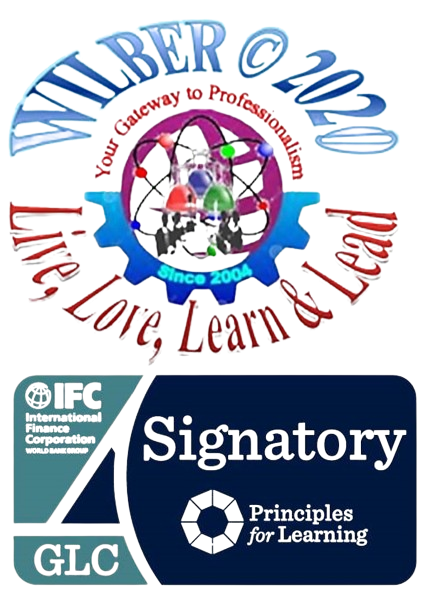STRATEGIC PLANNING PROCESS, RESPONSIBILITIES IN PLANNING AND DOCTRINE, AND APPROACHES IN POLICE PLANNING
STRATEGIC PLANNING

Strategic planning is a series of preliminary decisions on a framework, which in turn guides subsequent decisions that generate the nature and direction of an organization. This is usually long-range in nature. The reasons for Strategic Planning are:

- VISION – A vision of what a police department should be.
- LONG-RANGE THINKING – Keeping in mind that strategy is deciding where we want to be
- STRATEGIC FOCUS – priority, and attention
- CONGRUENCE – the compatibility of a solution to the problem; harmony
- A STRATEGIC RESPONSE TO CHANGE – theory of change and adaptability
- STRATEGIC FRAMEWORK – guiding principles, template, and blueprint.

What are the STEPS in the Strategic Planning process?
- STEP 1 – Develop Mission and Objectives
- STEP 2 – Diagnose Environmental Threats and Opportunities
- STEP 3 – Assess Organizational Strengths and Weaknesses
- STEP 4 – Generate Alternative Strategies
- STEP 5 – Develop Strategic Plan
- STEP 6 – Develop Tactical Plan
- STEP 7 – Assess Results of Strategic and Tactical Plan
- STEP 8 – Repeat Planning Process

In the process, the police administrator can use the potent tool of alternatives. Alternatives (options) are means by which goals and objectives can be attained. They may be policies, strategies, or specific actions aimed at eliminating a problem. Alternative do not have to be a substitute for one another or should perform the same function. For example, our goal is to “improve officer-survival skills.” The plan is to train the officers on militaristic and combat shooting. The alternatives could be:
- Alternative 1 – change the police vehicles
- Alternative 2 – issuing bulletproof vests
- Alternative 3 – using technology-based dispatch system
- Alternative 4 – screening quality first-line supervision and the like.
What can we expect in planning?
- Improve analysis of problems
- Provide better information for decision-making
- Help to clarify goals, objectives, priorities
- The result is more effective allocation of resources
- Improve inter-and intradepartmental cooperation and coordination
- Improve the performance of programs
- Give the police department a clear sense of direction
- Provide the opportunity for greater public support
- Increase the commitment of personnel
RESPONSIBILITY IN PLANNING

[1] Broad External Policy Planning
This is the responsibility of the legislative branch of the government. The main concern of the police in this broad external policy planning is assisting the legislature in their determining of police guidelines through the passage of appropriate laws or ordinances for the police to enforce.
[2] Internal Policy Planning
This is the responsibility of the Chief PNP and other chiefs of the different units or headquarters within their area of jurisdiction to achieve the objectives or mission of the police organization. They are responsible for planning, organizing, staffing, directing, coordinating, controlling, reporting, and budgeting for the police organization within existing policies and available resources. For maximum police effectiveness, they shall be responsible for the technical operation of the police organization and management of its personnel.
CATEGORIES OF POLICE DOCTRINE
(A) Primary Doctrines
- Fundamental Doctrine – the basic principle in planning, organizing, and management of the PNP in support of the overall pursuits of the PNP vision, mission & strategic action plan of the attainment of the national objectives.
- Operational Doctrine – the principles and rules governing the planning, organizing, direction, and employment of the PNP forces in the accomplishment of basic security operational mission in the maintenance of peace and order, crime prevention and suppression, internal security, and public safety operation.
- Functional Doctrine – this provides guidelines for specialized activities of the PNP in the broad field of interest such as personnel, intelligence, operation, logistics, planning, etc.

(B) Secondary Doctrines
- Complimentary Doctrine – doctrines formulated jointly by two or more bureaus in order to effect a certain operation with regards to public safety and peace and order.
- Ethical Doctrine – defines the fundamental principles governing the rules of conduct, attitudes, behavior, and ethical norm of the PNP.
What are the Approaches in Police Planning?
A variety of approaches are employed in the planning processes. Each is unique and can be understood as a method of operationalizing the word planning. There are basically five major approaches to planning which are:
(a) SYNOPTIC PLANNING
- Synoptic planning or the rational comprehensive approach is the dominant tradition in planning. It is also the point of departure for most other planning approaches.
- This model is based on a problem-oriented approach to planning especially appropriate for police agencies. It relies heavily on the problem identification and analysis of the planning process. It can assist police administrators in formulating goals and priorities in terms that are focused on specific problems and solutions that often confront law enforcement.

STEPS IN SYNOPTIC PLANNING:
-
- Prepare for Planning
- Describe the present situation
- Develop projections and consider alternative future states
- Identify and analyze problems
- Set goals
- Identify the alternative course of action
There are three (3) Steps in Selecting an Alternative Course of Action:
-
-
- Strategic analysis – this include the study on the courses of actions; suitability studies; feasibility studies; acceptability studies; and judgment.
- Suitability – each course of action is evaluated in accordance with general policies, rules, and laws.
- Feasibility – these include the appraisal of the effects of a number of factors weigh separately and together
- Acceptability – those judged to be suitable and feasible are then realized in acceptability studies.
- Cost-effectiveness Analysis – This technique is sometimes called cost-benefit or cost performance analysis. The purpose of this form of selection is that the alternative chosen should maximize the ratio of benefit to cost.
- Must-wants Analysis – This method of selecting a preferred course of action combines the strengths of both strategic and cost-effectiveness analysis. Must want analysis is concerned with both the subjective weights of suitability, feasibility, and acceptability and the objective weights of cost versus benefits.
- Strategic analysis – this include the study on the courses of actions; suitability studies; feasibility studies; acceptability studies; and judgment.
-
-
- Plan and carry out the implementation
- Monitor and evaluate progress
- Summation of the synoptic planning approach
- Repeat the planning process

(b) INCREMENTAL PLANNING
Incrementalism concludes that long-range and comprehensive planning is not only too difficult but inherently bad. The problems are seen as too difficult when they are grouped together and easier to solve when they are taken one at a time and broken down into gradual adjustments over time.
(c) TRANSACTIVE PLANNING

Transactive planning is carried out in face-to-face interaction with the people who are to be affected by the plan and not to an anonymous target community of beneficiaries. Techniques include field surveys and interpersonal dialogue marked by a process of mutual learning.
(d) ADVOCACY PLANNING

Beneficial aspects of this approach include a greater sensitivity to the unintended and negative side effects of plans. Additionally, it is a pluralistic and inclusive planning theory where planners seek to represent the interests of various groups within society.
(E) RADICAL PLANNING
The first mainstream involves collective actions to achieve concrete results in the immediate future. The second mainstream is critical of large-scale social processes and how they permeate the character of social and economic life at all levels, which, in turn, determine the structure and evolution of social problems.
FACTORS AFFECTING POLICE PLANNING
- Condition – a consideration of political atmosphere, public opinion; ideological aspirations; peace and order; national/community ethics, behavior, and discipline in the area where the plan will be implemented.
- Time – It is the period available to establish a plan before putting it into the effort. Consider the time of execution/implementation, the time interval, and the time allowed for the revisions and modifications of the plan.
- Resources Available – Allocation of manpower, money, and materials.
- Skills and Attitudes of Management – Refers to the level of experiences of the personnel who are involved in the preparation of the plan and those who will execute the plan. The applicability of good management principles shall be exploited.
- Social and Political Environment – Refers to social and political practices, which will be affected b the plan or plan affecting these practices, beliefs, and norms of society.
- Physical Facilities – Refers to machinery, instrument, or tools in the attainment of the goals of the plan. A certain system or structural designs in order to meet expected results.
- Collection and Analysis of Data – Ready sources and basis of good decision-making by the makers of the plan may be properly obtained through research and other means of information gathering techniques.

A. Plans According to Coverage
- Local Plan – Plans to cover local stations, sub-stations, and precincts.
- Regional Plan – Plans whose coverage includes regional, province, district.
- National Plan – a nation or state-wide plan.
B. Plans According to Time

- Strategic or Long Range Plan
- It relates to plans which are strategic or long-range in the application and it determines the organization’s original goals and strategy.
- An Example of this is the PNP-ITP or PATROL PLAN 2030.
- Depending upon the type of business, the time scale for long-range plans can vary from three-five (3-5) years through to one or two decades.
- Intermediate or Medium-Range Plan
- It relates to plans, which determine quantity and quality efforts and accomplishments. It refers to the process of determining the contribution on efforts that can make or provide with allocated resources.
- The six (6) PNP Master Plan is an example of this. Master Plan (OPLAN) Sandugo, Sandigan, sang-Banat, Sang-ingat, Saklolo, and Sangyaman.
- Just like strategic, intermediate may range from one (1) to three-five (3-5) years.
- Operational or Short Range Plan
- Refers to the productions of plans, which determine the schedule of special activity and are applicable from one week or less than year duration. A plan that addresses immediate needs which are specific and how they can be accomplished on time with available allocated resources.
- Examples are OPLAN Disiplina, OPLAN Jumbo, OPLAN Bantay Dalampasigan, LOI (Letter of Instructions), and the likes which may cease anytime once behavioral change occurs.
- Less than a year of programming including tactical deployment belong to this type of plan.
CONGRATULATIONS!
You were able to finish the module.
Click the RED arrow below if you want to preview and read the previous module or click the GREEN arrow to take your assessment for your “certification of achievement“.


